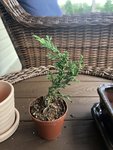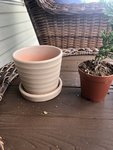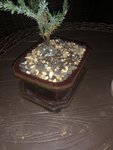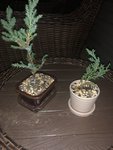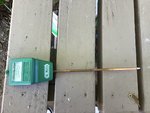Nurse_Firefighter390
Seedling
Went to the local garden center. Found this little guys for pretty cheap. Now what! Should they be potted in these little pots I bought with them or pot them in bigger containers to allow them to grow quicker? Thoughts? I have no intention of doing anything with the trees (wiring/pruning) yet just want to try and be able to keep them alive as I have killed the last one. Working on the basics of life before I had the spice.
also can anyone tell me what type of juniper the second one is. I’m fairly certain the first (larger one) is a Procumbens nana. Just unsure what the second(smaller one) is.
Thanks for the tips and advice.
also can anyone tell me what type of juniper the second one is. I’m fairly certain the first (larger one) is a Procumbens nana. Just unsure what the second(smaller one) is.
Thanks for the tips and advice.


